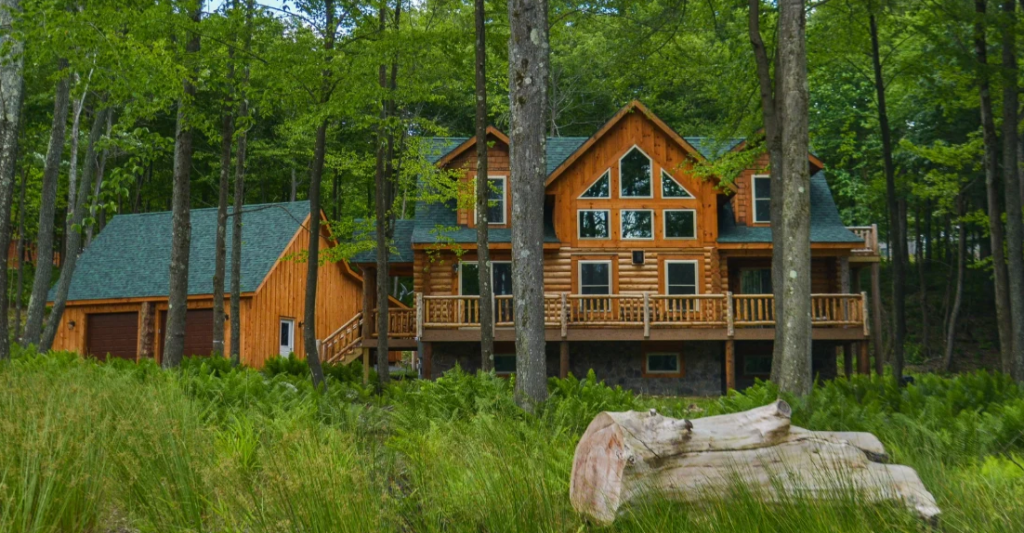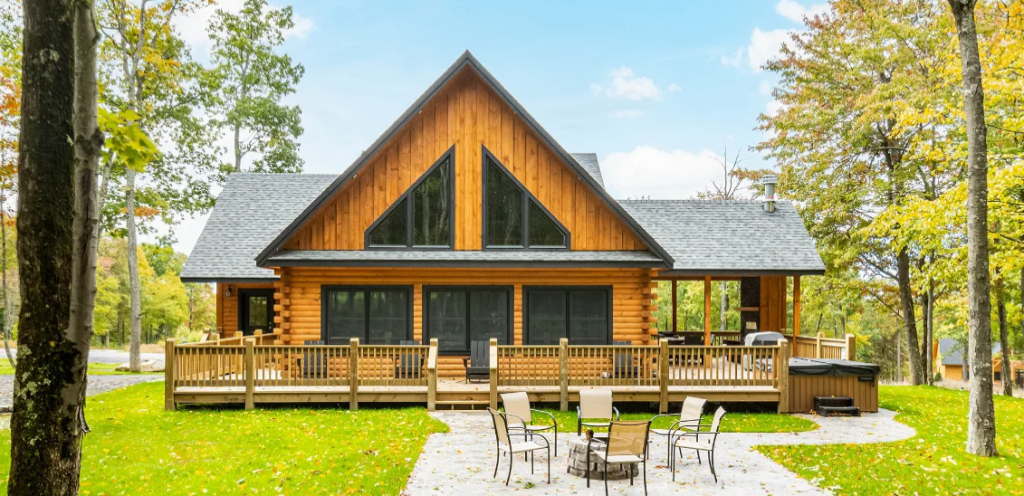Tag: garrett
Public Hearing Set For Solar Facility
April 8th, 2025 by WCBC Radio
More than 1,800 acres along Route 36 near Westernport and Barton may be used to build a 300 megawatt solar project. A virtual public hearing on the project is scheduled for April 15 and will include a presentation by Jade Meadow LLC, the applicant for the facility along with statements by the Department of Natural Resources and the Office of the People’s Counsel, the state’s ratepayer advocate. The project also touches a portion of Garrett County. To sign up for the hearing, visit psc.state.md.us.
Projected Population For Each Maryland County in 2030
The U.S. Census Bureau conducts its decennial national census every 10 year. The census directly shapes federal funding allocations and congressional representation. According to 2020 data, Maryland’s population stands at 6,177,224, ranking it 18th nationally. The state has maintained steady growth of at least 7% per decade, positioning it as the 22nd fastest-growing state relative to population size. Below, we’ve listed Maryland’s 23 counties from smallest to largest projected 2030 population based on current trends.
23. Kent County: 20,900
22. Somerset County: 27,450
21. Garrett County: 30,250
20. Dorchester County: 35,160
19. Caroline County: 37,700
18. Talbot County: 39,650
17. Queen Anne’s County: 56,320
16. Worcester County: 57,150
15. Allegany County: 72,150
14. Calvert County: 97,900
13. Cecil County: 112,050
12. Wicomico County: 115,700
11. St. Mary’s County: 131,260
10: Washington County 164,900
9. Carroll County: 174,150
8. Charles County: 184,470
7. Harford County: 271,860
6. Frederick County: 300,580
5. Howard County: 356,860
4. Anne Arundel: 608,990
3. Baltimore County: 846,590
2. Prince George’s County: 940,960
1. Montgomery County: 1,124,790
Information courtesy of Maryland State Archives
Whats Happening This Week
Garrett County Chamber Of Commerce
April 9 - April 15, 2025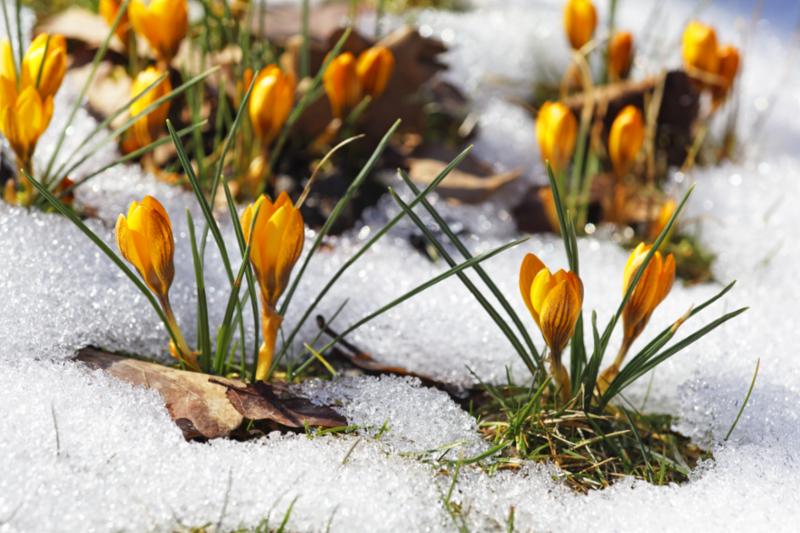   April 9 | 5:30 pm - 6:30 pm Friends of the LibraryOakland Library. Every Second Wednesday of the Month.Love your local library? Want to help shape its programs and future? Become a Friend of the Library and contribute your ideas and talents. Join us to discuss programs and activities you'd like to see. April 9 | 5:30 pm - 6:30 pm Friends of the LibraryOakland Library. Every Second Wednesday of the Month.Love your local library? Want to help shape its programs and future? Become a Friend of the Library and contribute your ideas and talents. Join us to discuss programs and activities you'd like to see. April 10 | 5:00 pm - 7:00 pm April Business After Hours - Pawn Run Bar & Kitchen485 Boy Scout Road, Oakland, MD.The Chamber is pleased to announce that Pawn Run Bar & Kitchen will be hosting our April Business After Hours on Thursday, April 10th from 5:00 pm - 7:00 pm. April 10 | 5:00 pm - 7:00 pm April Business After Hours - Pawn Run Bar & Kitchen485 Boy Scout Road, Oakland, MD.The Chamber is pleased to announce that Pawn Run Bar & Kitchen will be hosting our April Business After Hours on Thursday, April 10th from 5:00 pm - 7:00 pm. Nestled in the mountains and off the beaten path; Pawn Run's vision of a laid back, outdoorsy environment to enjoy craft cocktails, craft beer, wine and signature small plates has come to life. No matter the season, whether you are coming by car, bike or snowmobile - they are happy to have you! They love this land and the roots they have planted along the way. The owners of Pawn Run were presented with an opportunity to revitalize and protect the business and that is just what they did. Their passion for the history of the building has been the driving force behind their mission to keep the good times rolling for the community in this small corner of Maryland! Enjoy delicious food and drinks as you mingle with fellow Chamber members and Chamber staff at our monthly networking events. Don't forget your business card to enter to win prizes. $10.00 in advance for members$15.00 for members at the door and non-membersTo register, click here.  April 10 | 6:00 pm - 8:00 pm Deep Creek Lake-Themed Team Trivia Nights Aces Run Restaurant, Oakland, MD.Test your knowledge of all things Deep Creek Lake with Team Trivia Nights every Thursday evening 6-8pm throughout April at Ace's Run! Food and drink available and there will be prizes, including a cool custom DCL100 award for the winning team each week!Questions will be drawn from our archive and timeline on the website, so study up!More info on the Deep Creek Lake Centennial including more events, projects, an interactive timeline and more available at https://dcl100.com/ April 10 | 6:00 pm - 8:00 pm Deep Creek Lake-Themed Team Trivia Nights Aces Run Restaurant, Oakland, MD.Test your knowledge of all things Deep Creek Lake with Team Trivia Nights every Thursday evening 6-8pm throughout April at Ace's Run! Food and drink available and there will be prizes, including a cool custom DCL100 award for the winning team each week!Questions will be drawn from our archive and timeline on the website, so study up!More info on the Deep Creek Lake Centennial including more events, projects, an interactive timeline and more available at https://dcl100.com/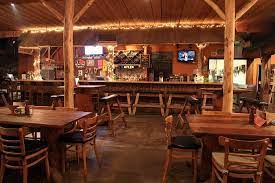 April 10 | 6:30 pm - 8:30 pm Team Trivia Mountain State Brewing Company, 6690 Sang Run Rd, McHenry, MD.Team Trivia every Thursday, free to play! Contact information: 301-387-3360. April 10 | 6:30 pm - 8:30 pm Team Trivia Mountain State Brewing Company, 6690 Sang Run Rd, McHenry, MD.Team Trivia every Thursday, free to play! Contact information: 301-387-3360.  April 10, 11 & 12 | 7:30 pm Northern Garrett High Theatre Performance of the Little Shop of HorrorsPerforming Arts Center at Garrett College, McHenry, MD.Join the Northern Garrett High School Theatre's production of "Little Shop of Horrors" from April 10th through 12th, at 7:30 pm, at the Performing Arts Center of Garrett College. April 10, 11 & 12 | 7:30 pm Northern Garrett High Theatre Performance of the Little Shop of HorrorsPerforming Arts Center at Garrett College, McHenry, MD.Join the Northern Garrett High School Theatre's production of "Little Shop of Horrors" from April 10th through 12th, at 7:30 pm, at the Performing Arts Center of Garrett College.In a dead-end job in a dead-end shop, Seymour Krelbourn snips the dead ends off of flowers beside his miserly boss, Mr. Mushnik and the love of his life, Audrey Fulquard, wishing that his luck will change. When a strange and unusual plant falls into his lap, Seymour finds his stars realigned! Suddenly, the world revolves around him and this new flytrap that he names Audrey 2. To stay on his winning streak, all Seymour will have to do is keep his precious plant fed… Little Shop of Horrors is a horror comedy musical, at times funny, frightening, and sincere, but always outrageous.Parental discretion is advised for audience members under 13 years of age. Tickets are available at https://garrettarts.org/event-directory/ for $5/each.  April 11 | 4:30 pm - 6:30 pm St. Peter's Fish DinnersSt. Peter the Apostle Catholic Church and Parish Center Hall, 208 S. Fourth St., Oakland, MD.Friday Fish Dinners at St. Peter the Apostle Catholic Parish!Everyone's favorite tradition is back . . . Enjoy a BIG fish dinner with your family and friends at St. Peter's in Oakland, Fridays during Lent (March 7 – April 11). Dine-in and Carry-out meals are available.Prices:$13 adults$6 children (ages 12 and under)$7 fish sandwich onlyMenu and event details can be found at garrettstpeter.com/fishdinners.All are welcome! April 11 | 4:30 pm - 6:30 pm St. Peter's Fish DinnersSt. Peter the Apostle Catholic Church and Parish Center Hall, 208 S. Fourth St., Oakland, MD.Friday Fish Dinners at St. Peter the Apostle Catholic Parish!Everyone's favorite tradition is back . . . Enjoy a BIG fish dinner with your family and friends at St. Peter's in Oakland, Fridays during Lent (March 7 – April 11). Dine-in and Carry-out meals are available.Prices:$13 adults$6 children (ages 12 and under)$7 fish sandwich onlyMenu and event details can be found at garrettstpeter.com/fishdinners.All are welcome! April 12 | 10:00 am - 1:00 pm Spring Farmers Markets by Mountain Fresh Producers AssociationMountain Fresh Pavilion, S 1st St., Oakland, MD.Join us for our spring farmers markets! Our vendors will have fresh produce, meats, eggs, baked goods, jams & jellies, crafts, and personal care items. Want to get updates and product availability lists for the market? Sign up for our weekly email list at mountainfresh.org. April 12 | 10:00 am - 1:00 pm Spring Farmers Markets by Mountain Fresh Producers AssociationMountain Fresh Pavilion, S 1st St., Oakland, MD.Join us for our spring farmers markets! Our vendors will have fresh produce, meats, eggs, baked goods, jams & jellies, crafts, and personal care items. Want to get updates and product availability lists for the market? Sign up for our weekly email list at mountainfresh.org. April 12 | 1:00 pm - 4:00 pm Hat Bar & Caricature Drawings at Cosmic Studios!Cosmic Cheer and Gymnastics, 221 South Third St., Oakland, MD.Join us at Cosmic Studios for Open Gym/Open Play. We will have Medved Farms set up with The Hat Bar offering tons of options to choose from including new summer styles! Our friend the “Silly Goose” Paul Tepper will also be here drawing caricatures! Come join us for a perfect fun filled family Spring Day! April 12 | 1:00 pm - 4:00 pm Hat Bar & Caricature Drawings at Cosmic Studios!Cosmic Cheer and Gymnastics, 221 South Third St., Oakland, MD.Join us at Cosmic Studios for Open Gym/Open Play. We will have Medved Farms set up with The Hat Bar offering tons of options to choose from including new summer styles! Our friend the “Silly Goose” Paul Tepper will also be here drawing caricatures! Come join us for a perfect fun filled family Spring Day! April 13 | 12:00 pm - 3:00 pm Wine Tasting at Smoke N Mirrors114 South 3rd Street, Oakland, MD.Come join us in the Gallery for a free wine tasting, on Sunday, April 13. Wine is available to purchase by the bottle or by the glass and the Tapas menu is available during the tasting. Walk-ins are welcome! April 13 | 12:00 pm - 3:00 pm Wine Tasting at Smoke N Mirrors114 South 3rd Street, Oakland, MD.Come join us in the Gallery for a free wine tasting, on Sunday, April 13. Wine is available to purchase by the bottle or by the glass and the Tapas menu is available during the tasting. Walk-ins are welcome! April 13 | 1:00 pm - 3:00 pm Team BingoMountain State Brewing Company, 6690 Sang Run Road, McHenry, MD.Team Bingo every Sunday at 1pm!Contact information: 301-387-3360. April 13 | 1:00 pm - 3:00 pm Team BingoMountain State Brewing Company, 6690 Sang Run Road, McHenry, MD.Team Bingo every Sunday at 1pm!Contact information: 301-387-3360.  April 13 | 1:00 pm - 5:00 pm Easter Egg-StravaganzaDeep Creek Pottery, 1550 Deep Creek Drive, Suites C & D, McHenry, MD. Join us for a fun and fantastic event! Our Easter Egg-Stravangza is sure to please! Paint Easter Pottery or choose a fun spring mosaic creation! Free crafts after your project and a fun snack bar are sure to please! We will have a face painter from 1:00-3:00 PM. This will be an event not to be missed! See you soon! A $5 entry fee will be charged per family! This is a walk in event! Contact information: 301-501-1619 or deepcreekpottery@gmail.com. April 13 | 1:00 pm - 5:00 pm Easter Egg-StravaganzaDeep Creek Pottery, 1550 Deep Creek Drive, Suites C & D, McHenry, MD. Join us for a fun and fantastic event! Our Easter Egg-Stravangza is sure to please! Paint Easter Pottery or choose a fun spring mosaic creation! Free crafts after your project and a fun snack bar are sure to please! We will have a face painter from 1:00-3:00 PM. This will be an event not to be missed! See you soon! A $5 entry fee will be charged per family! This is a walk in event! Contact information: 301-501-1619 or deepcreekpottery@gmail.com. |
| Garrett County Chamber of Commerce | 15 Visitors Center Drive | McHenry, MD 21541 US |
Big Log Lodge-Vacation Rental In Biltmore At Lodestone
Big Log Lodge is a newly built, charming log home in North Deep Creek Lake, MD, offering a perfect blend of rustic appeal and modern amenities. With 4 bedrooms (each with its own full bath), it comfortably sleeps 12 guests, making it an ideal choice for families or groups of friends. The home features a spacious great room with cathedral ceilings, a gas fireplace, and large windows with scenic woodland views.
Key Features:
Accommodations: 4 bedrooms with queen beds and smart TVs; a queen-size futon in the loft.
Amenities: Private hot tub, sauna, pool table, dart board, and a well-equipped kitchen with stainless appliances.
Outdoor Space: Wrap-around deck, two rear decks, fire pit, and BBQ grill.
Activities: Located near Lodestone Golf Course, Wisp Resort (skiing, tubing, ziplining), and Swallow Falls State Park. Sledding hill available on the property during winter.
Additional Info: A 4WD vehicle is required in winter.
Ideal for a mountain retreat, Big Log Lodge offers both comfort and adventure for an unforgettable vacation experience.
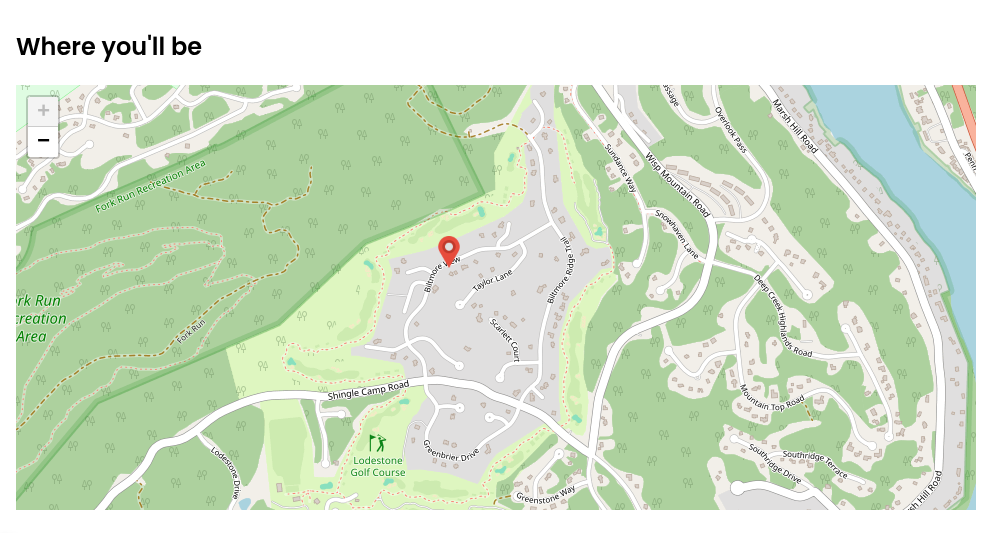

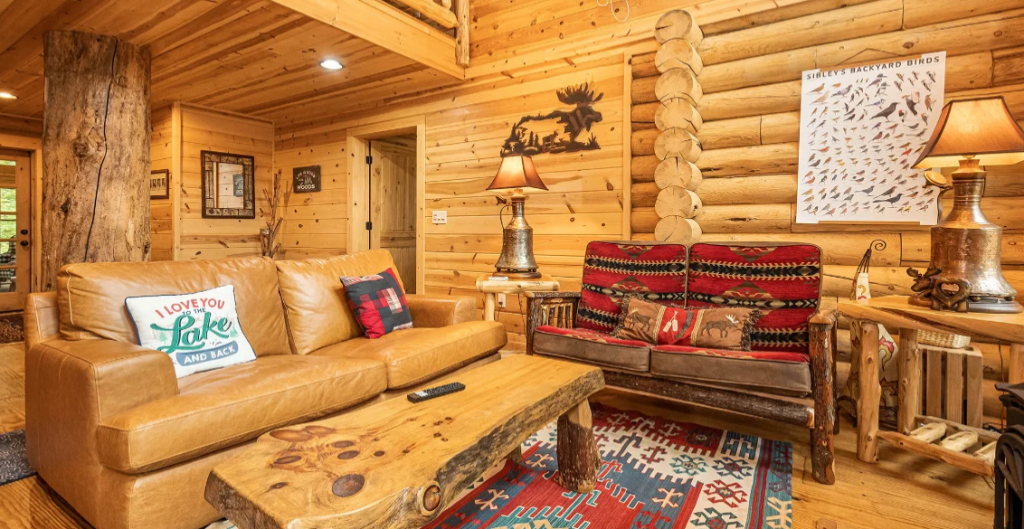
Amenities
View
Wooded View
Location
On Mountain
Lake Area
Golf Course
Ski Area
Pool
Hot Tub - Private
Pet Suitability
No Pets Allowed
Property Features
Air Conditioning
Balcony
Cable/Satellite
Deck
Patio
Fireplace
Iron & Ironing Board
Linens Provided
Pool Table
Wireless Internet
Washing Machine
Grill - Gas
Heating
Carbon Monoxide Detector
Dryer
Smoke Detector
Private Entrance
TV (s)
Fire Extinguisher
Fire Pit
Laptop Friendly
Living Room
No Smoking or Vaping Allowed
Private Sauna
Self Check-in (Keyless Lock)
TV (s) - Smart
Hot Water
Dining Room
Elite
Partial/Mid-Week Stays
Kitchen
Blender
Coffee Maker
Keurig Coffee Maker
Cookware
Dishwasher
Full Kitchen
Ice Maker
Microwave
Oven
Refrigerator
Stove
Toaster
Dishes and Utensils
Mini Fridge
Bathroom
Hair Dryer
Bath Towels Provided
Walk In Shower
Parking
Parking Available - Free
Parking /Access- 4WD Required for Winter
Resort/Shared Amenities
Gated Community
Sauna
Community Lake Access
Fitness Room
Nearby Activities
Boating
Restaurants
Fishing
Golf Course(s)
Miniature Golf
Hiking
Snow Skiing
State Parks
Hilltop Hideaway-Vacation Rental In Biltmore at Lodestone
Hilltop Hideaway is a spacious, brand-new 6-bedroom, 5-bathroom vacation home in North Deep Creek Lake, MD, offering a perfect getaway for up to 16 guests. This luxurious property features a private hot tub, modern amenities, and scenic golf views. It’s ideally located near golf courses, Wisp Resort, and Deep Creek Lake State Park, offering a variety of activities such as skiing, hiking, whitewater rafting, and boating.
Key Features:
Accommodations: Sleeps 16, with 5 King bedrooms and a Queen/Queen bunk bed.
Amenities: Private hot tub, pool table, wet bar, gas grill, smart TVs, and a fireplace. No pets allowed.
Outdoor Space: Large patio with outdoor fireplace, ideal for relaxing and enjoying the views.
Proximity: Less than a mile to Lodestone Golf Course and a five-minute drive to Wisp Resort for skiing and other activities. Deep Creek Lake State Park is nearby for summer fun with beach access, canoeing, and hiking.
Important Info: A 4WD vehicle is required in winter. Check-in at 4:00 PM, check-out by 10:00 AM. No pets allowed.
Ideal for family vacations or group trips, Hilltop Hideaway combines relaxation with adventure in a prime location.


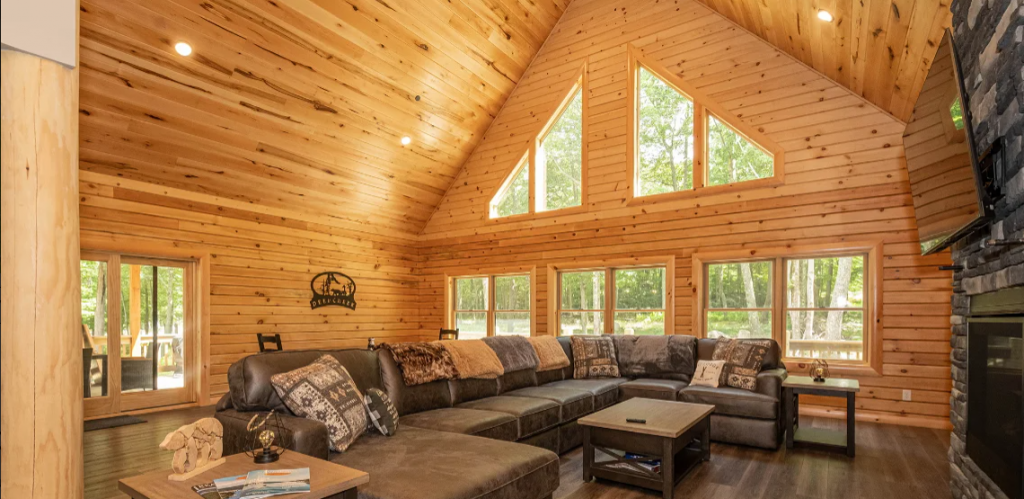
Amenities
View
Golf View
Wooded View
Location
Near Mountain
On Mountain
Lake Area
Golf Course
Ski Area
Pool
Hot Tub - Private
Pet Suitability
No Pets Allowed
Property Features
Air Conditioning
Deck
Patio
Fireplace
Iron & Ironing Board
Linens Provided
Pool Table
Wireless Internet
Wet Bar
Washing Machine
Grill - Gas
Heating
Carbon Monoxide Detector
Dryer
Smoke Detector
Private Entrance
TV (s)
Fire Extinguisher
Fire Pit
Laptop Friendly
Living Room
No Smoking or Vaping Allowed
Self Check-in (Keyless Lock)
TV (s) - Smart
Wine Cooler
Luxury Property
Hot Water
Dining Room
Elite
Partial/Mid-Week Stays
Kitchen
Blender
Coffee Maker
Keurig Coffee Maker
Cookware
Dishwasher
Full Kitchen
Ice Maker
Microwave
Oven
Refrigerator
Stove
Toaster
Dishes and Utensils
Mini Fridge
Bathroom
Jetted Tub
Hair Dryer
Bath Towels Provided
Walk In Shower
Parking
Parking Available - Free
Parking /Access- 4WD Required for Winter
Resort/Shared Amenities
Gated Community
Nearby Activities
Boating
Restaurants
Fishing
Golf Course(s)
Miniature Golf
Hiking
Snow Skiing
State Parks
Whitewater Rafting
Garrett County Chamber Of Commerce
Garrett County Chamber Of Commerce
 March 31 - April 6, 2025 March 31 - April 6, 2025   April Lunch N Learn: Bereavement at Work - April 3Downstairs @ UNO Pizzeria & Grill - 12:00 pm - 1:30 pm.Enjoy a light lunch and hear from Dr. Kent Tonkin, Associate Professor at Saint Francis University, Loretto, PA, on the topic of bereavement in the workplace. Lunch will be provided at no cost to attendees thanks to the generous sponsorship of C&S Fredlock Funeral Home, P.A. April Lunch N Learn: Bereavement at Work - April 3Downstairs @ UNO Pizzeria & Grill - 12:00 pm - 1:30 pm.Enjoy a light lunch and hear from Dr. Kent Tonkin, Associate Professor at Saint Francis University, Loretto, PA, on the topic of bereavement in the workplace. Lunch will be provided at no cost to attendees thanks to the generous sponsorship of C&S Fredlock Funeral Home, P.A. One size does NOT fit all: Integrating employee preferences into workplace bereavement leave and communications policies. The Family Medical Leave Act guarantees most American workers up to 12 weeks of leave for a medical condition, but most employees can expect four days of bereavement time…if their employers offer it. This session will explore the impacts of leave policies on work-life balance during personal loss and the power that supervisors have in managing employee bereavement. Best practices for flexible workplace policies will also be discussed in the context of today’s work environment. Dr. Tonkin will apply the results of his qualitative research alongside trends and practices in the modern workplace to suggest ways in which managers and employers can create more grief-literate (and compassionate) workplaces. The purpose of this presentation is to: 1. Identify problematic managerial practices regarding grief in the workplace.2. Present the author’s qualitative research and seminal sources to provide nuanced details about the challenges faced by grieving employees.3. Suggest flexible best practices for better reintegrating and serving bereaved employees into their work environments. 4. Identify potential national policy changes which could assist employees and employers in creating more fair and equitable employment practices. Learning objectives:1. Create conversation regarding interaction with bereaved employees, including information sharing. 2. Discuss training and policy options for companies to better serve bereaved employees.3. Classify and explain best practices in creating compassionate workplaces. For more information and to register, click here  April Business After Hours 2025 - Pawn Run Bar & KitchenThe Chamber is pleased to announce that Pawn Run Bar & Kitchen will be hosting our April Business After Hours on Thursday, April 10th from 5:00 pm - 7:00 pm. April Business After Hours 2025 - Pawn Run Bar & KitchenThe Chamber is pleased to announce that Pawn Run Bar & Kitchen will be hosting our April Business After Hours on Thursday, April 10th from 5:00 pm - 7:00 pm. Nestled in the mountains and off the beaten path; Pawn Run's vision of a laid back, outdoorsy environment to enjoy craft cocktails, craft beer, wine and signature small plates has come to life. No matter the season, whether you are coming by car, bike or snowmobile - they are happy to have you! They love this land and the roots they have planted along the way. The owners of Pawn Run were presented with an opportunity to revitalize and protect the business and that is just what they did. Their passion for the history of the building has been the driving force behind their mission to keep the good times rolling for the community in this small corner of Maryland! Enjoy delicious food and drinks as you mingle with fellow Chamber members and Chamber staff at our monthly networking events. Don't forget your business card to enter to win prizes. $10.00 in advance for members$15.00 for members at the door and non-membersTo register, click here.  Vote in the 2025 Board of Directors Election!Please be advised that official ballots for the 2025 Garrett County Chamber of Commerce Board of Directors election are in the mail and will be delivered to all primary representatives of in-county Chamber members. The Chamber is governed by a 15-member volunteer Board of Directors and 1/3 of Board is up for re-election each year. Primary representatives of in-county members will receive a Board ballot, bio, and a return envelope. Please review the candidates, select five, and have your ballot delivered to Garrett County Chamber of Commerce, 15 Visitors Center Drive, McHenry, MD 21541 no later than April 9, 2025. New Board members and officers will be announced at the Annual Membership Meeting & Dinner on Wednesday, June 4, 2025. Vote in the 2025 Board of Directors Election!Please be advised that official ballots for the 2025 Garrett County Chamber of Commerce Board of Directors election are in the mail and will be delivered to all primary representatives of in-county Chamber members. The Chamber is governed by a 15-member volunteer Board of Directors and 1/3 of Board is up for re-election each year. Primary representatives of in-county members will receive a Board ballot, bio, and a return envelope. Please review the candidates, select five, and have your ballot delivered to Garrett County Chamber of Commerce, 15 Visitors Center Drive, McHenry, MD 21541 no later than April 9, 2025. New Board members and officers will be announced at the Annual Membership Meeting & Dinner on Wednesday, June 4, 2025. Cross Ireland Off Your Bucket List With Our 2026 "Shades of Ireland" Chamber TripThe Garrett County Chamber of Commerce is excited to announce an exciting new bucket list trip! We are partnering with the award-winning travel agency, Collette, to offer “Shades of Ireland” March 22-31, 2026. We will be holding a special Trip Preview Presentation on Tuesday, May 13, 2025, to give prospective travelers a taste of what’s in store during this life-changing tour and answer any questions you may have regarding the process, itinerary, and the lauded Collette Difference. Click here to download the "Shades of Ireland" flyer. Click here to register for the Preview Presentation. Cross Ireland Off Your Bucket List With Our 2026 "Shades of Ireland" Chamber TripThe Garrett County Chamber of Commerce is excited to announce an exciting new bucket list trip! We are partnering with the award-winning travel agency, Collette, to offer “Shades of Ireland” March 22-31, 2026. We will be holding a special Trip Preview Presentation on Tuesday, May 13, 2025, to give prospective travelers a taste of what’s in store during this life-changing tour and answer any questions you may have regarding the process, itinerary, and the lauded Collette Difference. Click here to download the "Shades of Ireland" flyer. Click here to register for the Preview Presentation. 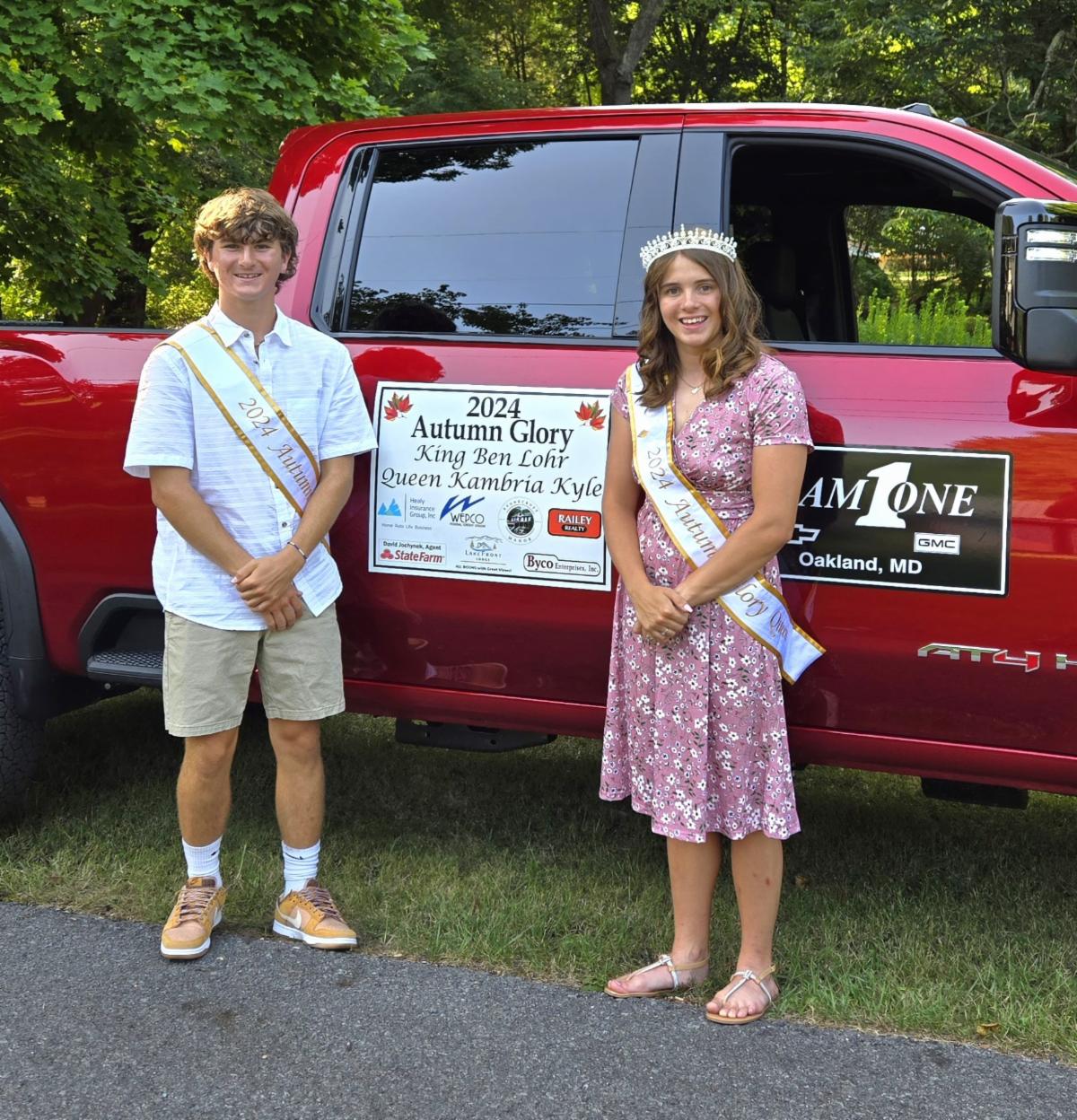 Now Accepting Applications for 2025 Autumn Glory RoyaltyPlease help spread the word that the Garrett County Chamber of Commerce is inviting all those Garrett County students currently in their junior year of high school to submit an Autumn Glory Royalty application for consideration. We will be choosing a King and a Queen to represent the 58th Annual Autumn Glory Festival at a variety of events throughout the summer and fall of 2025. Both the King and Queen will receive an educational contribution. As part of the application, you are required to submit a 300-word essay on why you think you should be selected to be part of the Royalty Court. In an effort to give all qualifying students a chance to become Autumn Glory Royalty we have eliminated the application fee. Interviews will be conducted by appointment in May and we hope to complete the process by June 1. Please click here to download the application. If you have any questions, please contact Nick Sharps at nick@garrettchamber.com or call (301) 387-8745. Now Accepting Applications for 2025 Autumn Glory RoyaltyPlease help spread the word that the Garrett County Chamber of Commerce is inviting all those Garrett County students currently in their junior year of high school to submit an Autumn Glory Royalty application for consideration. We will be choosing a King and a Queen to represent the 58th Annual Autumn Glory Festival at a variety of events throughout the summer and fall of 2025. Both the King and Queen will receive an educational contribution. As part of the application, you are required to submit a 300-word essay on why you think you should be selected to be part of the Royalty Court. In an effort to give all qualifying students a chance to become Autumn Glory Royalty we have eliminated the application fee. Interviews will be conducted by appointment in May and we hope to complete the process by June 1. Please click here to download the application. If you have any questions, please contact Nick Sharps at nick@garrettchamber.com or call (301) 387-8745. Help Address Your Workforce Issues with the Updated Work Ethic Diploma Program!After 5 successful years we feel it is time to make some changes to the Work Ethic Diploma (WED) Program to keep the it relevant and take it to the next level. The concept of the program was originally put forward to the Garrett County Chamber of Commerce by employers who felt students were not learning the soft skills necessary to become productive members of the workforce. Help Address Your Workforce Issues with the Updated Work Ethic Diploma Program!After 5 successful years we feel it is time to make some changes to the Work Ethic Diploma (WED) Program to keep the it relevant and take it to the next level. The concept of the program was originally put forward to the Garrett County Chamber of Commerce by employers who felt students were not learning the soft skills necessary to become productive members of the workforce.With the input of area educators, business leaders, and post-secondary representatives, we developed standards to evaluate the work ethic of our students. These standards are not being changed. Based on feedback from employers participating in the program and discussions with our stakeholders we have decided to replace the hourly pay incentive with a more tangible sign-on bonus to be rewarded after a qualifying length of employment. Another exciting change we are implementing is a Worth Ethic Diploma Reception that will recognize and celebrate students receiving the honor and our business partners participating in the program. This will be a great opportunity for you to network and recruit prospects. More details on this event will follow. Whether you are a current WED partner or looking to join the program, we ask that you please review and sign the new form and return it to holly@garrettchamber.com or 15 Visitors Center Drive, McHenry, MD 21541. You can also click here for the criteria and business commitment form updated with changes highlighted for your convenience. We appreciate your participation and look forward to working with you to grow and enhance the Work Ethic Diploma Program to better meet Garrett County’s workforce challenges.  Office Depot - April Monthly SpecialsThis April, enjoy members-only exclusive specials with discounts of up to 84% off folders, desk accessories, sticky notes, and more. Take advantage of these monthly specials when you shop online for office, school, and home essentials at ODP Business Solutions. Click here to view the April 2025 Monthly Specials. Click here for more information on the program and to register. Office Depot - April Monthly SpecialsThis April, enjoy members-only exclusive specials with discounts of up to 84% off folders, desk accessories, sticky notes, and more. Take advantage of these monthly specials when you shop online for office, school, and home essentials at ODP Business Solutions. Click here to view the April 2025 Monthly Specials. Click here for more information on the program and to register. |
This Unique Treehouse Rental is Hidden Away in McHenry, Maryland
Take your getaway to new heights — quite literally — when you book a stay at this picture-perfect treehouse Airbnb near Deep Creek Lake.
Written by
Beth Copenhaver
There's something inherently magical about a treehouse. It harkens back to childhood days and imaginative escapes. If you're looking for a getaway that comes with a heavy dose of whimsy and nostalgia, we invite you to explore Maryland's very own Whispering Woods, a multi-level treehouse hidden away near Deep Creek Lake in McHenry, Maryland. It's a stunning, newly-built cabin wholly enveloped in the woods, offering guests an immersive, secluded stay.
One of the best parts about taking a vacation is the change in scenery. And nothing switches it up quite like sleeping among the treetops. Whether you're a Maryland resident or visiting from out of state, you'll love the chance to move into a real-life treehouse for a few nights. The cabin can comfortably accommodate up to five guests with two bedrooms, three beds, and two baths.
Unlike many treehouse designs, where the space is tight and rustic, Whispering Woods is luxurious. Take some time to explore the interior, and you'll fall in love with the warm wood paneling and ceiling, luxe finishes, and beautiful spiral staircase leading to the second floor. Other top-notch amenities include a fully-stocked kitchen, a living room with a 65-inch TV, and plenty of room to lounge.
One of my favorite features is the use of natural light. Abundant windows offer glimpses of the surrounding trees, and the mountains are also visible in the winter. You'll be staying just a short drive from Maryland's famous Wisp Resort, which offers outdoor activities like skiing and adventure courses year-round.
While the interior is impressive, the outdoor space really sets this place apart from other cabin rentals in the area. Spacious decks, ample seating, and a private hot tub mean you can enjoy being outside even in the middle of winter.
After a day filled with enjoying all that this treehouse has to offer, gather with your crew around the fire pit and enjoy quality conversation under a blanket of stars. It just doesn't get much better! We'll leave you with one recent glowing review that summarizes this stay's many charms: "We had such a great stay here at Whispering Woods! Check-in was easy, everything was super clean, and the house was exactly as pictured. It was very private and peaceful, and we especially loved the cozy loft at the top of the treehouse and using the hot tub every day."
Ready to book your treetop getaway? Visit the official Airbnb page for additional details, including rates, reviews, and reservations.
Looking for even more travel ideas? We've compiled a list of our favorite hotels and resorts in Maryland. We think you'll be packing your bags in no time!
New Germany State Park: Raising Maryland’s Alps
When Western Maryland was a mysterious and distant territory to most Americans, for German immigrants, it felt just like home. Among the villages they settled in, one in present-day Garrett County came to be known nostalgically as New Germany. Today, this village is the location of New Germany State Park. Over a century after its settlement, New Germany hosted the first ski resort south of the Mason-Dixon Line and earned the region the moniker of “Maryland’s Alps.” In between the first German settlers and the ski resort, the land was transformed and made anew. To return to its alpine reputation, New Germany has witnessed the rise and fall of timbering, the growth of scientific forestry, and the snowballing success of outdoor recreation.
When German settlers first arrived in present-day Garrett County, the dense forest seemed like fertile ground for a new start. They were leaving behind war, strife, and their peasant pasts in the old country, where they were subject to feudal obligations. In the eighteenth century, the westward advance of White settlers and the wars they fought against Native American tribes had pushed out much of Western Maryland’s Indigenous occupants. While the German settlers who arrived in New Germany in the 1790s were seeking the opportunity to freely hold land and a reprieve from violence, the Native Americans had faced devastating conflict and dispossession.
The New Germans cleared the land and dammed Poplar Lick Run. By the 1850s, families like the Swaugers, Swartzendrubers, Ottos, and Bittingers had settled around the lake and established a multistory saw and grist mill below the dam. Run by John Swauger, the sawmill harvested the expanses of white pine in New Germany. While most of the New Germans were farmers, by the late nineteenth century they cashed in on the burgeoning timber trade.
View fullsize
The New Germany area as surveyed by the US Geological Survey in 1898, Swauger’s Mill in red, potential locations for the McAndrews Mill in green, Durst and Funk in purple, and Otto’s in teal.
The trees of Western Maryland couldn’t fall fast enough. When transportation lines like the National Road and the Baltimore & Ohio Railroad opened Western Maryland to larger markets, logging companies poured in to harvest the dense forests. Wood supplied housing material, paper, was the dominant source of fuel and heat, and made up the ties of railroads that criss-crossed the nation. Garrett County, once almost entirely forest, saw its trees felled to a point that by 1900, of the forested land not already cleared for farming, eighty-nine percent had been cutover from timbering.
While much of the timberland was in large holdings owned by coal and lumber companies, the New Germans carved out enough of their own plot to form the timbering group McAndrews & Simpson, Christian Otto, Bittinger & Wiley. The men were immigrants or the sons of immigrants and had set up several operations along their local creeks. The introduction of circular steam-powered sawmills, like those produced by H&F Blandy, offered the farmers industrial-style productivity. Swauger’s Mill, running antiquated up-and-down saws, was retired to be solely a gristmill that was later run by Philip McAndrew. McAndrew, the lone Irishman of the group, operated his own sawmill along Elk Lick Run. Christian Otto’s industrial sawmill lay on the edge of his farm on Meadow Mountain. On Poplar Lick Run, a half mile North of the old Swauger Mill were the Funk and Durst Mills, both operating Blandy equipment, and 300 feet apart from each other. These German families may have been cut into the McAndrews, Simpson, Otto, Bittinger, and Wiley operations, or were staking out their own claims in the booming industry.
View fullsize
Ad for a Blandy steam-powered saw mill (Library of Congress)
View fullsize
New Germany is in the quadrant third from the right, and second down, the forested land around the creeks are culled while the ridge timber along Meadow Mountain remains
By 1902 most of the forested land surrounding New Germany had been culled and cutover, and what remained along Meadow Mountain to the east was the most undesirable Ridge Timber (in comparison to the more commerciable Slope and Swamp Timber), a forest type characterized by shallow soil, short trunks, and habitation of fungi and insects. It was during this time, when mountaintops appeared bare and the endless harvest looked near its end, when voices for conservation began gaining ground. At the highest level, Gifford Pinchot of the newly formed US Division of Forestry, was calling for a scientific management of forest resources. His protege, Fred Besley, became Maryland’s first state forester in 1906. Max Rothkugel, another of Pinchot’s colleagues, established one of the first experimental tree plantations of its kind in West Virginia.
View fullsize
Besley’s map of the forests of Garrett County in 1915, the sections marked “c” indicate culled hardwood trees
For foresters like Besley, the treatment of the forest was careless and wasteful. Companies overestimating demand and tanneries who stripped hemlock for its bark left behind large quantities of wood to rot on the forest floor. In New Germany, misplaced white pine logs and stumps laid sunken to the bottom of New Germany Lake. Farmers, especially in Garrett County, cleared land for grazing by burning it. Throughout Maryland forest fires raged, especially in vulnerable cutover lands. Besley advocated for forestry by speaking the language of business, claiming “the present lack of good forest management means a real loss to [Garrett] County of an annual revenue amounting to at least $650,000.” His mission above all was to assign Maryland’s land to “the most profitable uses.”
At first, Besley focused on curbing forest fires and educating landowners on ways to manage and market their timber resources. Less than 3,000 acres of forestland were in state hands in the early 1900s. Yet, Besley’s arguments for conservation failed to sway landowners, and the American economy of unyielding consumption barreled on to the year 1929. The economic collapse and Great Depression that followed gave the government a new mandate for action. The 1929 Federal Utilization Land Program enabled the state to purchase farmland labeled “submarginal” and reconvert it into forest. As a part of the New Deal, the Civilian Conservation Corps (CCC) were put to work, replanting trees, developing recreational facilities, and forming a vanguard of scientific management.
the McAndrews House and (Old Swauger) mill (courtesy Maryland DNR)
View fullsize
The village of New Germany in 1929
The CCC camp below Meadow Mountain (courtesy Maryland DNR)
The act of seizing “submarginal” land was less clean in practice. Not everyone would take a check for the land they had lived and relied on. The farms of more obstinate families would be condemned and they would be evicted. Through this process Maryland acquired 50,000 acres in 1929, including much of the land in and around New Germany. Some parts of the New Germany community survived, including the Otto family, who ran a grocery store, filling station, and farm, and the McAndrews, who came to own much of the land around the lake. New Germany’s one-room schoolhouse remained in use until the 1950s, and still stands today. Otherwise many New Germany farmers were bought out and the land passed into new hands once again to form New Germany Forest Recreation Area (later designated as a state park) and the surrounding Savage River State Forest.
Norway Spruces in rows along New Germany’s Orchard Loop trail
The CCC set up Camp S-52 of Company 326 in New Germany. The young men who joined spent their first winter in tent camps as they built up the infrastructure of the park. They rebuilt the dam and constructed barracks, recreation and mess halls, and cabins out of American chestnut. An early favorite for planting was the Norway Spruce, native to Northern Europe. The CCC also planted Scotch pine and red pine, species native to the Northeastern US, but not Maryland. These species were selected for their ability to repair a damaged landscape, sturdy enough to survive in depleted soil and speedy enough to establish roots that prevented further erosion. Their method for planting was mechanical, girdling old trees to allow younger saplings to take over and arranging the saplings in perfect rows. The New Germany’s CCC camp stood from 1933 until 1938, when some operations moved to Meadow Mountain. CCC work continued in New Germany until 1942.
The ski resort at New Germany emerged from the conservation of the land and the rise of outdoor recreation. In the late nineteenth century, Western Maryland had seen the development of resorts like Deer Park Hotel in Garrett County as getaway locations for wealthy city folk. The sentiment came from a Progressive Era belief in the outdoors as an important site for improved health and leisure. For urban reformers pushing for more park space, the development of recreation spaces was crucial for people of all classes. Fred Besley tapped into these rising currents and developed state forests as state parks in order to secure more funding for forestry.
With its vacation resorts and a new system of parks set up by the CCC, Garrett County earned its reputation as a summer getaway. Yet in the late 30s, ski clubs from Cumberland, Baltimore, and Washington, DC were begging for a resort in the mountains of Western Maryland. Skiing was taking off in the 1930s: the invention of rope-tows in 1932 meant skiers wouldn’t have to climb up mountains to ski down them and the 1936 Winter Olympics had debuted an alpine skiing event. Maryland state foresters Henry Buckingham, Matthew Martin, and Joe Davis set out to make New Germany that resort. CCC members, National Youth Administration crews (another New Deal work program), and Washington Ski Club volunteers constructed the trails. As Maryland’s first ski resort, New Germany opened in 1940. By the mid-50s, the region’s first commercial ski resort had opened in nearby Canaan Valley, West Virginia.
View fullsize
Before New Germany Road (in red), some ski slopes cut down Meadow Mountain towards Poplar Lick Run and the lake
View fullsize
Tow rope on the Otto Farm (courtesy Maryland DNR)
Samuel Otto, son of Christian Otto, lent a portion of his property on Meadow Mountain for a downhill slalom course and beginner trails, while other slopes were built on McAndrew’s Hill, across the lake from Meadow Mountain. On the Otto Farm, the State set up a rope tow powered by a pickup truck while a car shuttle serviced another trail. New Germany exploded in popularity as its cabins were regularly booked through the winter. This never dissuaded avid skiers who would pile on the floor of the Martin House (now Cabin #11) in sleeping bags. City skiers from Baltimore and Washington, DC frequented the New Germany slopes. Young locals made do without the fancy skiers of the more affluent. A descendant of the Swaugers, who worked as a CCC carpenter and barber, created skis out of the hickory bows that came off of CCC trucks.
Skiing at New Germany, February 1941 (courtesy Maryland DNR)
Dorothy Moore, overnight sleeping bag, Feb 22, 1941
New Germany even hosted international meets. Scandinavian and German professionals came to these Maryland Alps. Skiing was a highly celebrated sport in Germany. Perhaps for these skiers the landscape seemed as familiar as it had been to the New Germans and maybe even more so with the CCC-planted Norway spruces native to their homelands. By one way or another, German culture seems to have persevered in New Germany.
The forests of New Germany have seen many changes. From their initial proliferation, to their widespread cutting and clearing, and then their resurgence. The scientific management employed by the CCC focused on the regrowth of timber and planted non-native trees for their speed and stability. The Maryland Parks Service has focused on maintaining the ecology of Western Maryland. They currently foster native species and promote biodiversity by replanting red spruces and eastern hemlocks. While the woods have reclaimed New Germany’s downhill slopes and the ski resort no longer exists, you can still tour the park on skis, via their expanded cross-country trails. Once an Alps-like getaway for city folk, New Germany has earned a new reputation as a local gem and “Maryland’s Best Kept Secret.”
Cross-country skiers atop a frozen New Germany Lake
References
Bailey, Robert. Maryland’s Forests and Parks: A Century of Progress. Charleston, SC: Arcadia Publishing, 2006.
Besley, F.W. The Forests of Maryland. Annapolis, MD: Press of the Advertiser-Republican, 1916.
Blank, Gary. “Forest Management History in the Central Appalachians 1900 to 2000.” Maryland Department of Natural Resources.
Cathell, David. “Garrett County Logging and Mining Railroads.” https://davecathell.tripod.com/garloco.html#clark.
“The Civilian Conservation Corps Part II: A Maryland Perspective.” Maryland Department of Natural Resources, https://dnr.maryland.gov/centennial/Pages/Centennial-Notes/CCC_History_Part_II.aspx.
Curran, H.M. “The Forests of Garrett County,” in Maryland Geological Survey: Garrett County. W. Bullock Clark, Baltimore, MD: Johns Hopkins Press, 1902, 303-329
Durst, Ross. “The Mills of New Germany.” The Glades Star 2, no. 18(1955)
Foxfire 10. eds. George Reynolds et al., New York, NY: Anchor Books, 1993
Hennighausen, L.P. “Early German Settlements in Western Maryland,” in Sixth Annual Report of the Society for the History of the Germans, Baltimore, MD: Schneidereith & Sons, 1892, 13-25
Lund, Morten. “The 1930s: The Unexpected Blossoming of Alpine Skiing.” International Skiing History Association, https://www.skiinghistory.org/gallery/1930s-unexpected-blossoming-alpine-skiing.
Maryland State Archives, “Garrett County Mill Chapter,” https://msa.maryland.gov/megafile/msa/speccol/sc4300/sc4300/000005/000000/000007/unrestricted/garrett%20county%20mill%20chapter.pdf
Nead, Daniel. The Pennsylvania-German in the Settlement of Maryland. Lancaster, PA: The New Era Printing Company, 1913.
“New Germany State Park.” Maryland Department of Natural Resources, https://dnr.maryland.gov/publiclands/Pages/western/NewGermany/Heritage.aspx.
Northeastern Lumber Manufacturers Association, “The Norway Spruce Story.” https://www.nelma.org/the-norway-spruce-story/.
Zumbrun, Francis. “Skiing comes to the ‘Maryland Alps’ in 1940.” Maryland Department of Natural Resources, https://dnr.maryland.gov/centennial/Pages/Centennial-Notes/Skiing-NewGermany.aspx.
2025 GCBR Home Show Expo
Mar 29 at 11:00AM - 3:00PM
Garrett County Fairground
270 Mosser Road
Ag Hall
McHenry
21541
Family-friendly, free & open to the public! Activities for kids. Food available, proceeds going to Cindy's Fund. Vendors include lenders, landscapers, home inspectors, interior designers & MORE!
The Expo will host an extensive range of businesses – from service providers to lending institutions to home improvement and construction companies – all within Garrett County and the surrounding area. The public will have a chance to meet with local businesses that may be of resource to them and their home needs. This will be an opportunity for businesses to connect and showcase what they have to offer YOU!
Additionally, The Travel Mug trailer will be setup to sell hot and cold beverages.
Cindy's Fund (a local charity on a mission to help cancer patients in Garrett County) will be running concessions from the kitchen with proceeds going to support their mission, and Emalee Dicks will be doing face painting for children for FREE.
Courtesy of Level Acres Landscaping & Nursery from Springs, PA, at least the first 50 children will get to become mini landscapers for a day! Kids will have the opportunity to experience a little piece of landscaping with some added fun, designing and decorating individual planters, and planting a plant to take home and watch grow.
Come to meet with our vendors or just to look around at the boats and hot tubs that will be on display!
Easter at the Airport
The Garrett County Airport is opening its doors for a fun-filled, family-friendly Easter celebration on Saturday, April 12, from 2:00 to 5:00 p.m. This free event, presented in partnership with Taylor-Made Deep Creek Sales, welcomes guests of all ages to enjoy an afternoon of activities, crafts, and sweet treats.
Families can take part in egg coloring with TEAM 1629 Robotics, create paper airplanes from coloring sheets, and snap pictures with the Easter Bunny. Kids will also receive free candy eggs while supplies last. Adding to the excitement, HART for Animals will be on-site with adoptable puppies looking for their forever homes.
The Garrett County Airport invites the community to come out, celebrate the season, and enjoy a unique Easter event in a one-of-a-kind setting.
For more information about the event, please contact Adison Wyer, Garrett County Airport Manager, at 301-746-8599 or awyer@garrettcountymd.gov.


